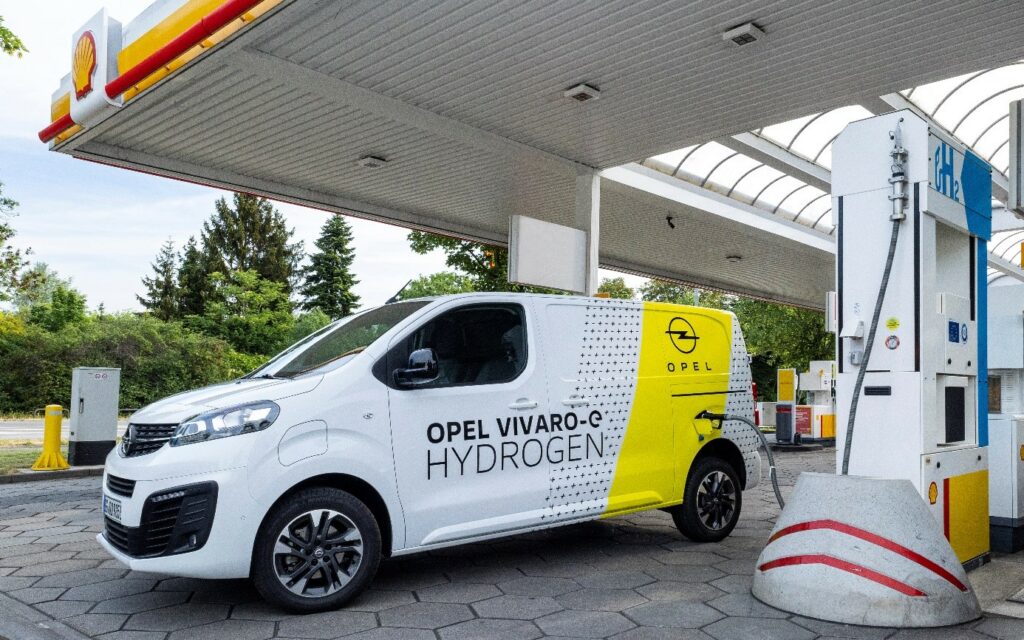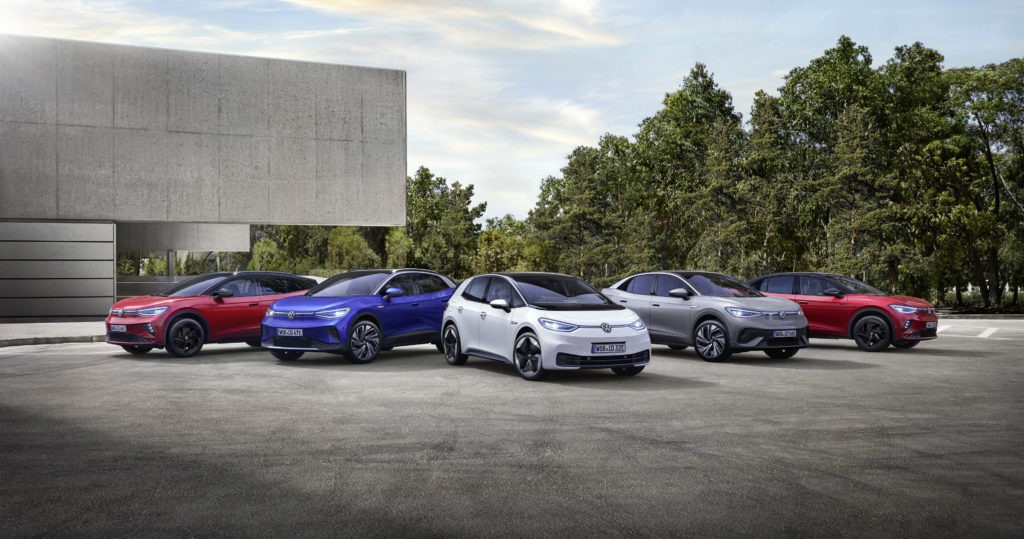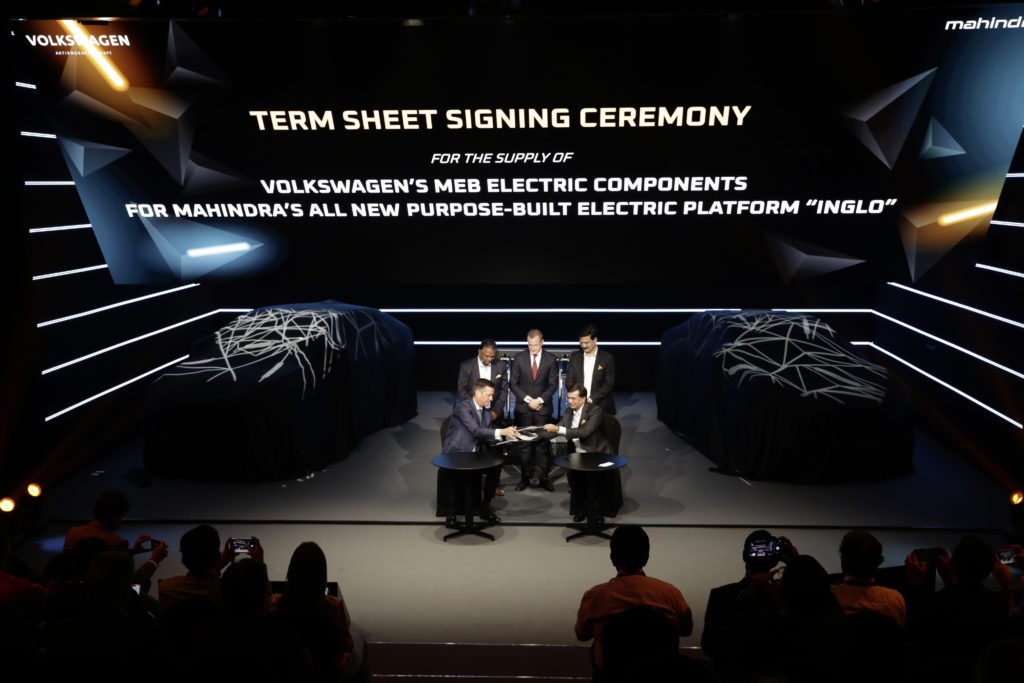Opel advances electromobility with LCV push
15 September 2022

Autovista24 principal analyst Sonja Nehls discusses Opel’s electrified light-commercial vehicle (LCV) line-up and the Vivaro-e Hydrogen with Andreas Marx, head of Opel Germany.
The electrification of LCV markets is advancing after years of being overshadowed by innovations in the passenger-car market. Stellantis brands have a fully-electrified LCV range and the Opel brand recently introduced the Vivaro-e Hydrogen. As of 2028, Opel will only offer battery-electric vehicles (BEVs) in Europe and most product lines are already available with fully-electric or plug-in hybrid (PHEV) powertrains, including LCVs.
‘We do not see any alternative to the electrification of mobility, bearing in mind the European politicians’ decision to phase out internal-combustion engines (ICEs),’ said Marx. ’At the moment, in addition to the midsize Opel Vivaro-e and the Combo-e compact van, we also offer the Movano large van as the battery-electric Movano-e. The entire Opel LCV portfolio is all-electric and locally emissions-free, while the Vivaro-e Hydrogen fuel-cell vehicle represents the next step in our electrification strategy.’
Opel and Stellantis are preparing for the rising demand in batteries, required for the increasing number of BEVs coming to market. This means building a gigafactory for battery-cell production in Kaiserslautern in south-west Germany, together with their partners.
European registrations of new BEV passenger cars more than tripled from below 400,000 units in 2019 to over 1.2 million in 2021. For LCVs, the growth is considerably smaller, rising from 25,000 units in 2019 to 59,000 in 2021. One main reason for the LCV market lagging behind is the availability of models, but more electrified commercial vehicles are being launched now.
‘We expect a similar development for light-commercial vehicles soon. For instance, we see the trend that local authorities regulate the traffic within their town centres and introduce zero-emission regulations. Tradesmen, craftsmen, and parcel services will be obliged to transform their vehicles from internal-combustion engines to electrified mobility.’

Source: Opel
Marx explained that the challenges for LCV customers are not all too different from those passenger-car drivers face. It is mainly about finding suitable charging locations. But as many traders do not have high daily mileages, the range offered by commercial vehicles already covers a big portion of customers’ demand. For those driving longer distances, the most important aspect is fast charging.
‘Since commercial-vehicle customers literally earn money with their vehicles, time is money. Most of our commercial vehicles have a 100kW DC-charging capacity and customers can recharge their battery up to 80% in around 30 minutes. In general, anything that is developed for passenger cars in terms of fast charging also applies to commercial vehicles. A difference is that commercial customers will use the fast-charging possibilities more frequently than private drivers.’
For those customers requiring an extended driving range, Opel has introduced a hydrogen alternative, the Opel Vivaro-e Hydrogen. ‘The Opel Vivaro-e Hydrogen is a fuel-cell electric van with a plug-in battery. The whole fuel-cell system with the existing traction motor is integrated under the bonnet. This is why you can use the full payload, as well as the complete loading volume, as you do with an ICE van.’
In direct comparison to battery-electric vehicles, Marx sees refuelling speed as the second big advantage of the Vivaro-e Hydrogen. ‘Within three minutes, you can refuel and cover up to 400km on a full tank. Also, the vehicle is developed, engineered, and produced at our Opel site in Rüsselsheim. We can leverage that proposition as a door opener. A large proportion of first customers are already conquest customers coming from other brands.’
Infrastructure is the main obstacle when discussing the uptake of hydrogen-powered mobility. Opel expects governments to create frameworks supporting the electrification of individual mobility and Marx views the development confidently.
‘In the case of hydrogen, in Germany specifically, we are in a very comfortable situation. There is already a network of around 100 hydrogen filling stations. They are all accessible to the public, offer 700-bar refuelling technology and are open 24/7. We closely collaborate with H2 mobility, the company which operates close to 100% of the refuelling stations. The goal is to find a way to commercialise the vehicle on the one side, and the refuelling station on the other side.’
France is considered the second market to ramp up soon. ‘The plan is that by 2030, we will see 2,500 hydrogen stations across Europe, 1,000 of those in Germany.’
Electrifying the portfolio
Today, Opel offers 12 electrified models within its line-up, including commercial vehicles and passenger cars. In addition, the battery-electric Astra will follow in 2023, as a hatchback and as a Sports Tourer estate.

‘We also see the electrification of commercial vehicles as a great lever to convince many private customers to opt for BEVs, as they already experience electric mobility in their jobs. Since driving electrified is highly enjoyable and exciting, we do not expect many people to switch back to internal-combustion engines once they have had this experience.’
At the lower end of the portfolio, the Rocks-e is an interesting alternative to a moped. ‘It provides fully-electric, individual mobility while protecting the occupants from the elements. Among other customers, it can be driven by young people from 15 years of age with the AM driving licence in Germany. It is one of our strategic targets to attract young customers to our brand.’
The Rocks-e is also available in a delivery-vehicle format, the Opel Rocks-e Kargo, a viable offering for last-mile urban deliveries. With the Vivaro-e Hydrogen for longer distances, electrified LCVs for medium ranges, and then the Rocks-e Kargo for the last mile, Opel’s electrified LCV line-up covers all bases.
‘Our credo is to democratise innovations and technologies for a broad customer base at reasonable and affordable prices’
Andreas Marx, head of Opel Germany
‘We definitely cover a broad bandwidth, also bearing in mind our credo to democratise innovations and technologies for a broad customer base at reasonable and affordable prices and we are well positioned within the competitive environment,’ Marx commented.
‘We do not stand still, Stellantis has already announced the introduction of new platforms with a range of up to 800km. Opel will leverage the new platforms, supporting our plan to be a fully-electric brand in Europe as of 2028.’
The used-car market for electric passenger vehicles is not developing as quickly as the new-car market. This is mainly due to incentives applied almost exclusively to the new-car market, although the surge in fuel prices and restricted availability of used cars is helping.
Marx identified the main challenges for the used-LCV markets. ‘First of all, the used-car market heavily depends on the supply. We are still at the beginning of the electrification of the LCV market, so there are hardly any used commercial vehicles available. But this will change in due course.’
‘Customers buying a used car, will face the same constraints and challenges as those buying a new car. If local authorities decide to introduce CO2-emissions free areas, for example, within the city, it affects a used-car customer as well as a new-car customer. I do expect that the used-car market will rise as is the case for the new-car market.’
Last but not least, it is all about the battery – its reliability and durability. ‘We at Opel have extensive experience with electric cars, just take the Ampera as an example. We were among the first to come up with such an innovative technology around the electrification of cars. What we can see is that the durability and reliability as well as the range of older batteries is very good. That will of course have a positive impact on the residual value (RV) of any electrified vehicle going forward. In general, we offer a warranty of 160,000km or eight years for our batteries.’
While new-LCV buyers, typically larger companies, are aiming to their ESG (environmental social governance) targets, smaller businesses and used-LCV buyers do not feel that pressure so much. Carmakers can help used-car adoption with concepts and packages to overcome entry hurdles.
‘The capability to operate CO2-neutrally is the licence to operate at all‘
Andreas Marx, head of Opel Germany
‘When it comes to CO2 emissions, I always say that going forward, the capability to operate CO2-neutrally is the licence to operate at all. This will apply to any size of company in the market, sooner or later.’
‘We understand that there are some concerns and questions. We therefore offer leasing as a possibility to drive the car on a monthly instalment covering remarketing as well as the residual value risk at the end of the contract. I think that this is one of the key levers to convince customers to try out and experience electrification.’
Remarketing and residual-value management increasingly take second and third ownership into account. ‘It is getting more important to think about the lifecycle of a vehicle rather than the new-car business only, which currently focuses on 36 or 48 months. It is important that the entire industry changes its focus. There are already offers for used-car leasing but in my eyes, there is still room for improvement.’
Residual values have been rising massively since 2020. Ongoing supply-chain issues and resulting new-car delivery delays support this development. Despite RVs now stabilising, they remain at a high level, clearly above pre-pandemic prices.
‘The rising residual values reflect the true value of a car. The car as a product is all about advanced technology. It is all about a maximum of safety and comfort. Just compare the technology level and costs for a car today with the purchase price twenty years ago,’ Marx pointed out.
‘I think it is a very good correlation between what the automotive industry, and Stellantis and Opel specifically, have put into their cars in order to provide customers with a convenient, safe and advanced technology-driven ride. For that reason, I am convinced that the residual values we see today are very close to what a car truly deserves to have,’ Marx concluded.



